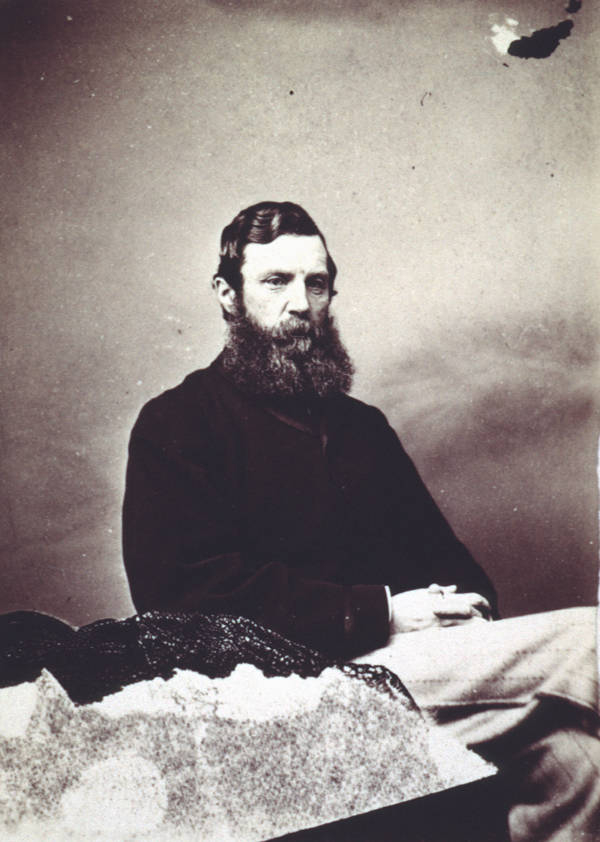- Richard Dry
Infobox Officeholder
honorific-prefix = Sir
name = Richard Dry
honorific-suffix = KCMG

imagesize = 250px
small
caption =
order = 7th
office = Premier of Tasmania
term_start =November 24 1866
term_end =August 1 1869
predecessor = James Whyte
successor =James Milne Wilson
constituency =
majority =
birth_date = Birth date|1815|9|20
birth_place = Launceston,Van Diemen's Land
death_date = Death date and age|1869|8|1|1815|9|20
death_place = Hobart,Tasmania
nationality =
party =
spouse = Clara Meredith
relations =
children =
residence =
alma_mater =
occupation =
profession =
religion =
website =
footnotes =Sir Richard Dry, KCMG (
20 September 1815 –1 August 1869 ) was anAustralia npolitician , who wasPremier of Tasmania from24 November 1866 until1 August 1869 when he died in office. Dry was the first Tasmanian-born premier, and the first Tasmanian to be knighted.Dry was born in Launceston,
Van Diemen's Land (nowTasmania ), the son of Richard Dry, an officer and pastoralist, and his wife Anne, "née" Maughan. Dry was educated at a Kirkland's private school in Campbell Town. In 1835 Dry voyaged toMauritius and the British ports inIndia , on his return toTasmania he managed his father's estate. He was made a magistrate in 1837, and was nominated to theTasmanian Legislative Council in 1844. He resigned his seat with five others, who together became known as the "patriotic six", after a conflict with Governor Wilmot over the power of the Legislative Council. In 1848 the six resigning members were renominated to the council, and when the Council was reconstituted in 1851 Dry, who was then a leading member of the Anti-transportation League, was elected as a member for Launceston, defeatingAdye Douglas .When the Council met at the of 1851, Dry was unanimously appointed its Speaker and remainsed so for four years before resigning his seat in July 1855. Dry then took a long trip to
Europe for health reasons . Dry returned to Tasmania in 1860, was elected to the Legislative Council in 1862, and on24 November 1866 became premier and colonial secretary. He had been much interested in the introduction of railways, was chairman of the Launceston and Deloraine Railway Association, and president of the Northern Railway League. His government succeeded in making some economies, introduced the Torrens real property act, and pushed the sale of crown lands.In 1869 Dry's government established telegraphic communication with Victoria by laying a cable under
Bass Strait . On1 August 1869 Dry died inHobart, Tasmania after a short illness. He married a daughter of George Meredith who survived him. He had no children. He was knighted in 1858, the first Tasmanian to be granted that honour.Dry was the first native of Tasmania to enter its parliament. He was barely 30 when his fight for political freedom made him extremely popular, and he retained this popularity all his life. He declared a wish that he might be buried at Hagley church near Quamby; a church he had himself built and endowed. At Hobart all business was suspended on the morning of his funeral, and during the four days' journey to the church the residents of every township on the route joined in the procession. His modest kindliness (it was said of him that he never condescended because he never thought of anyone being inferior to himself), his public and private charities, his honourable character, earned the respect and affection of the whole colony. A chancel was added to Hagley church by public subscription as a memorial to him, and there his body was laid. The "Dry Scholarship" was also founded by public subscription in connexion with the Tasmanian scholarships.
References
* [http://www.parliament.tas.gov.au/history/tasparl/dryr69.htm Parliamentary Library profile]
*Dictionary of Australian Biography|First=Richard|Last=Dry|Link=http://gutenberg.net.au/dictbiog/0-dict-biogD.html#dry1|accessdate=2008-10-04
*John Reynolds, ' [http://www.adb.online.anu.edu.au/biogs/A010313b.htm Dry, Sir Richard (1815 - 1869)] ', "Australian Dictionary of Biography ", Volume 1, MUP, 1966, pp 329-330. Retrieved on4 October 2008 Additional sources listed by the "Australian Dictionary of Biography":
*A. D. Baker, "The Life and Times of Sir Richard Dry" (Hobart, 1951); W. A. Townsley, "Struggle for Self-Government in Tasmania" (Hobart, 1951); F. C. Green (ed), "A Century of Responsible Government 1856-1956" (Hobart, 1956); L. L. Robson, Press and Politics (M.A. thesis, University of Tasmania, 1954); "Examiner" (Launceston), 13 Aug, 6 Dec 1855, 24 Nov 1859, 3 Aug 1869; GO 33/53/931, 33/57/1327 (Archives Office of Tasmania).
Wikimedia Foundation. 2010.
